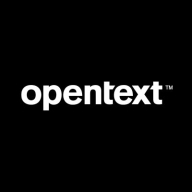

OpenText Software Delivery Management and Microsoft Azure DevOps are leading contenders in the field of software delivery management. Azure DevOps holds a significant advantage due to its seamless integration with Microsoft products and flexibility offered by its cloud-based services.
Features: OpenText Software Delivery Management provides robust end-to-end traceability, comprehensive Agile framework support, and integration with various management systems. Microsoft Azure DevOps offers exceptional integration with Microsoft products, ease of integration with other external tools, and a user-friendly interface.
Room for Improvement: OpenText Software Delivery Management could enhance test automation management and simplify configuration setup. Microsoft Azure DevOps needs better integration with non-Microsoft tools and improvements in its interface and navigation for better user experience.
Ease of Deployment and Customer Service: OpenText Software Delivery Management typically relies on on-premises deployment with direct customer service involving R&D. Microsoft Azure DevOps, with its cloud-based approach, offers superior deployment flexibility and responsive customer support with continuous updates.
Pricing and ROI: OpenText Software Delivery Management is often considered expensive, though its feature set can justify costs for enterprises. Microsoft Azure DevOps generally offers more competitive pricing, especially for Microsoft-savvy users, with subscription models that improve scaling and cost management.
On a scale of one to ten, where ten is the best, I would say ROI is an eight.
The ability to generate audit evidence with a single click saves ten days of work for ten people, enabling them to focus on other tasks.
Resolving issues took time since understanding our unique problems was not always straightforward for support teams.
I would rate technical support from Microsoft for Microsoft Azure DevOps an eight out of ten.
The scalability has left me pleased, not just for our teams in Europe, the Middle East, and Asia, but as we expanded into North America, Africa, and even Australia.
We can expand the number of servers and resources as required.
Its stability might be attributed to its legacy as an on-premise solution that has been in development for more than 25 years.
There was just one time when there was some infrastructure issue from Microsoft's side, so we faced some glitches for a few minutes only, not for hours or a day.
Everything works ninety-nine percent well.
Enhanced system guidance highlighting best practices would be beneficial, especially if experienced personnel are not available for support.
Those processes are a bit difficult for some customers who may not have technical knowledge and don't go through the entire documentation.
Instead of customers having to try many options themselves, they benefit from practitioner recommendations.
While it aims to be as flexible as possible for a large enterprise application, sometimes there are limitations that may not meet specific organizational needs.
They don't even provide a POC where you can have a sandbox or stuff that you can go through and see how exactly it's costing.
Azure charges only the parking cost, not for unnecessary or unwanted cost.
I find it to be expensive.
OpenText ALM Octane is an expensive product.
I can't approve my own request and move the code around without a review.
No organization would use just one vendor, and the goal is about what works well, is scalable, performs well, and offers a reasonable total cost of ownership.
Our company organized a training session with a certified Azure expert, which was extremely beneficial for adopting best practices during the initial three months.
Its ability to generate audit evidence with a single click is a significant advantage, as it saves considerable time and money compared to manual processes.
| Product | Market Share (%) |
|---|---|
| Microsoft Azure DevOps | 10.8% |
| OpenText Software Delivery Management | 4.5% |
| Other | 84.7% |

| Company Size | Count |
|---|---|
| Small Business | 42 |
| Midsize Enterprise | 27 |
| Large Enterprise | 69 |
| Company Size | Count |
|---|---|
| Small Business | 7 |
| Midsize Enterprise | 2 |
| Large Enterprise | 32 |
Microsoft Azure DevOps is a cloud service that enables developers to collaborate on code development projects and create and deploy applications quicker than ever before. The service helps unite developers, project managers, and software development experts through a collaborative experience while using the application. For the users' convenience, Azure DevOps offers the user cloud services through Azure DevOps Services or an on-premises service using Azure DevOps Server. In addition, it supports integration with additional services and adding extensions, including the ability for the user to create their own custom extensions.
Azure DevOps provides a variety of unified features that can be accessed through their web browser or IDE client, such as:
Benefits of Microsoft Azure DevOps
Microsoft Azure DevOps offers many benefits, including:
Reviews from Real Users
Microsoft Azure DevOps stands out among its competitors for a variety of reasons. Two major ones are its ability to forecast how long each task will take and the ability for users to follow the entire development process.
PeerSpot viewers note the effectiveness of this solution. An executive chief operating officer for a cloud provider notes, “We can forecast tasks and the number of hours a task will take and can compare it with how long a task actually takes.”
Carlos H., a product and system director at SPCM, writes, “I think the most usable thing is that you can follow the whole progress of the development process. This makes it very useful for us.”
OpenText Software Delivery Management provides application lifecycle management with Agile and Waterfall support. It features intuitive interfaces, CI/CD integration, automated testing, and robust reporting, improving project management efficiency and usability.
Designed to enhance teams' productivity and streamline processes, OpenText Software Delivery Management integrates seamlessly with Agile methodologies. Its comprehensive backlog and requirements management, user stories, and test management make it a complete tool for managing the development lifecycle. The platform aligns with DevOps, providing traceability and extensive customization options. Traceability from requirements to deployments is enhanced, making it easier for teams to track progress. It offers integration with popular tools like Jenkins and JIRA, ensuring a unified approach to continuous delivery and testing management.
What key features does OpenText Software Delivery Management include?OpenText Software Delivery Management is implemented across technology-focused industries, supporting Agile processes like requirements management and defect tracking. Organizations use it to standardize development workflows and optimize continuous delivery integration, choosing it for its ability to support both Agile and Waterfall methodologies within application lifecycle management.
We monitor all Application Lifecycle Management (ALM) Suites reviews to prevent fraudulent reviews and keep review quality high. We do not post reviews by company employees or direct competitors. We validate each review for authenticity via cross-reference with LinkedIn, and personal follow-up with the reviewer when necessary.